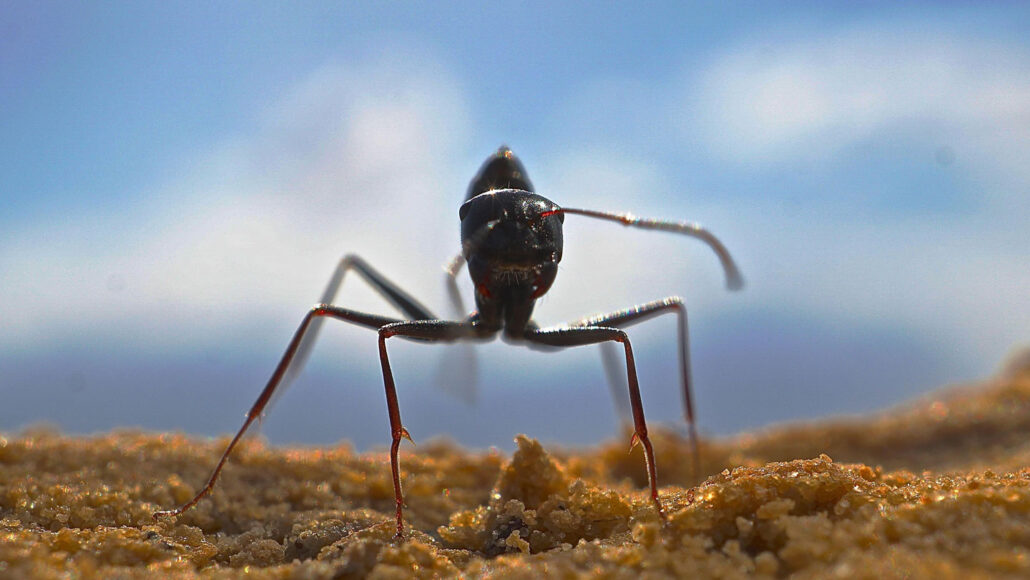"Tall Nest Hills Built by Ants Aid in Finding Home"

Some species of ants have discovered a way to prevent getting lost, by building taller anthills.
When foraging for food in the hot, flat salt pans of Tunisia, some desert ants can venture up to 1.1 kilometers away from their nests. To overcome the challenge of navigating back, the ants have started creating towering hills over their nests as a landmark to guide their way home.
Scientists from the Max Planck Institute for Chemical Ecology in Jena, Germany, have recently reported their findings in the July 10 issue of Current Biology. They discovered that desert ants (Cataglyphis spp.) rely on path integration and count their steps while keeping track of the sun’s position to navigate. As they search for food, they also use their sense of smell and sight, but the monotony of the salt pans proves challenging since the terrain looks similar in every direction.
The scientists wanted to investigate if the hills served as a landmark, so they conducted experiments on captured ants from nests in the middle of salt pans and those closer to the shorelines. It showed that only nests from the salt pan interiors had visibly distinct hills that could be as high as 40 cm.
By removing the hills and placing the ants at a distance, the researchers observed that ants from the salt pans' interior struggled more to find their way home than those from the shorelines, who were better at using the shoreline for direction since it was visible on their journey. To see if the ants deliberately built taller hills when there was no visible landmark, the scientists removed the hills of 16 salt pan nests and installed two 50-cm tall black cylinder poles near eight of them. The other eight nests had no visual aids. After three days, the researchers observed that only two of the ants had taken the initiative to rebuild their hills.
The scientists are yet to understand how and when the ants decide to build or not build the hills, but studies show that young ants that are not foragers yet usually build the nests and have not had to experience the difficulty in navigating due to the lack of hills. Hence, the veteran foraging ants exchange information with their novice nest mates.
The fact that the ants do not build the taller structures where they are not needed indicates that the risk of building the hills is tolerable, says Judith Bronstein, an ecologist at the University of Arizona.
Overall, this study is fascinating as it demonstrates the visual acuity of the ants and how they can regularly assess the complexity of their local habitat to make decisions based on this assessment.




